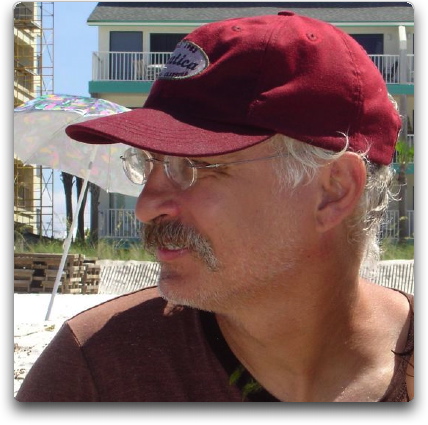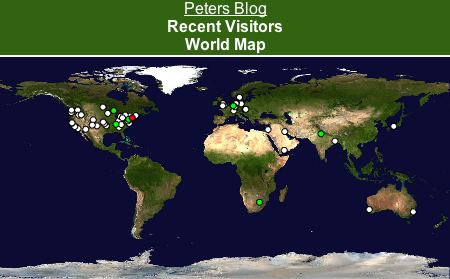In his op-ed contribution to The New York Times with the title "
Fear vs. Radiation: The Mismatch" published Oct. 21, 2013, Harvard lecturer David Ropeik weighs the potential threats posed by the Fukushima nuclear reactor disaster to public health in Japan and the ramifications for radiological emergency planning. His arguments may be misused to broadly label people with legitimate fears after a radiological incident as suffering from irrational fears of radiation.
The
Fukushima Daiichi Nuclear Power Station is located on the east coast of Honshu about 120 miles north of Tokyo. In the wake of the
Tōhoku Earthquake and Tsunami, Mar. 11, 2011, three of the station’s six reactors lost cooling and incurred fuel meltdowns. Powerful hydrogen explosions led to vast releases of hazardous radioactive material, rivaled only by the
1986 Chernobyl reactor accident in the Ukraine. More than 100,000 people were evacuated. Despite decontamination efforts, radiation doses in parts of the government-imposed exclusion zone around the stricken station are still considered unsafe for habitation. Roughly 70,000 former residents are not allowed to return home permanently.
 |
| On a day visit back home in the exclusion zone, 2013 (source: Die Welt). |
No particular cancer can be causally linked to ionizing radiation. Statistical correlations between cancer rates and exposure must be used to provide probabilistic estimates for the radiation impact. Ropeik cites research on
Hiroshima and Nagasaki atomic bomb survivors showing that within 6 miles off ground zero only 1 in 20 cancer deaths might be attributable to radiation. Furthermore, he notes that after the Chernobyl disaster “an exaggerated sense of the dangers to health of exposure to radiation”, known as
radiophobia, exceeded recognized radiation-related illnesses. The author concludes that in present-day Japan radiophobia may pose a greater health threat to the public than the actual exposure to ionizing radiation emitted from the stricken Fukushima power station.
How realistic such inferences are remains to be seen. The situation in the former Soviet Union, also known as
USSR, was distinctly different from Japan’s. The USSR had kept accidents in its nuclear effort secret. The protagonists of nuclear power had proclaimed the Socialist graphite-moderated
RBMK reactors absolutely fail safe and superior to US reactors, particularly after one suffered a partial fuel meltdown at
Three Mile Island in 1979.
We had passionate debates at my West German alma mater over the risks RBMKs might pose. The Communists were incessantly spinning how wonderfully accident-proof the design was. The reactors had to be safe, because they were designed by Socialist engineers who were not driven by profit thinking. The design was deemed so safe, they insisted, that the reactors did not need the protective containments Capitalist reactors in the West required. We remained unconvinced.
By contrast, citizens in the USSR more readily embraced the achievements of megalomanic Soviet technology. The horrible accident at Chernobyl would erode this trust deeply, particularly because the Soviet leadership did not acknowledge that it happened for several days. Confidence in the Soviet Union had been on the decline for some time. The inner resolve of the USSR was unraveling in face of the grinding
war in Afghanistan. Loss of confidence in the authorities and lack of information may have exacerbated radiophobia around Chernobyl. Culture and political circumstance were unique. The Chernobyl experience may not be easily extrapolated to radiological disasters in other countries.
Moreover, irrational fears may be inseparable from rational fears of an uncertain future that the continuing emergency holds. Fukushima evacuees must worry about jobs, homes, farms, and fisheries. In a small country with a high population density like Japan starting over elsewhere is not trivial. Livelihoods are ruined. Parents fear for the health of their children.
In response to the crisis, Fukushima Prefecture invited families to enroll the children in periodic medical checkups. Enrollees have presented with
thyroid nodules, that is abnormal growths with cancer potential. The authorities have not disclosed outcome in detail. The program remains opaque to patients and public alike. Assurances not to worry because the odds of developing cancer caused by the radiation are minuscule must seem callous and irrelevant to the parents.
So far, no one in Fukushima is known to have died acutely of high radiation doses.
Tokyo Electric Power Company, the operator of the stricken power station, has reported only one suspicious case of a cleanup worker who suddenly perished of leukemia. Some types of leukemia can be
radiation-induced.
By contrast, a greater concern for public health in Fukushima poses chronic exposure to low doses of radiation externally and, through incorporation, internally. The variability of the effects of such exposure is high, the predictability of outcome low, and variations in circumstance hamper comparisons with other radiological incidents.
For example, the atomic bombs unleashed radioactive fallout in a single blast, whereas the stricken Fukushima power station has continued to emanate radioactive material into air and sea since the accident two and a half years ago. The public health risks associated with the ongoing contamination in Fukushima may thus not be estimable using atomic bomb data.
In addition to the known health effects of the exposure to ionizing radiation, hitherto unrecognized effects may yet be discovered. For example, domestic animals left behind in Fukushima's exclusion zone have presented with infectious diseases at alarming rate, suggesting a weakened immune response. Comparisons with unexposed feral animals are needed to test this hypothesis.
The temporal signature of radioactive emissions from the stricken power station may be more compatible with that of Chernobyl, where thyroid cancers began to increase in children three years after the accident (see my post with the title "
Fukushima Radiophobia & The Mind" published Feb. 22, 2013). It is too early to predict at this time how Fukushima children will fare.
Ropeik concludes his op-ed with the idea that sheltering in place may protect public health more effectively in a radiological emergency than evacuation. MIT professor Jacquelyn Yanch suggested the same in a recent interview about her latest findings with
MITnews (see my post with the title "
Science, Media & The Mind" published Apr. 28, 2013).
However, sheltering in place may deliver only limited reprieve. Fukushima’s most immediate health threat emerged from early fallout of radioactive gases and dust. Gases permeate human dwellings. Dust penetrates cracks in walls, windows and doors. Residents in the plume’s path must evacuate as soon as permissible, using accurate and timely fallout forecasts. Ropeik’s proposal to change existing US regulation must be regarded with utmost skepticism.
According to
TEPCO accident reports, no evidence could be found to date suggesting that ground shaking severely damaged the Fukushima reactors. Rather, the reactors incurred fuel meltdowns because power distribution panels and emergency diesel generators were flooded, disabling emergency core cooling systems.
About two dozen nuclear reactors of the Fukushima type are currently operating in the US. A number are sited in flood-prone areas.
Oyster Creek Nuclear Generating Station in Forked River, New Jersey, 50 miles from downtown New York City and Philadelphia, resembles most closely in design and age Fukushima Daiichi Unit 1. Engineered by General Electric and completed in 1971, Unit 1 was the first commercial nuclear power reactor of this type in Japan and the first to melt down, taking less than a day.
A similar accident could be equally catastrophic in the U.S. The most recent large-scale industrial disaster in this country was the
2010 Deep Water Horizon oil spill in the Gulf of Mexico. British Petroleum had to set aside 42 billion dollars for mitigation and compensation, and that amount needn’t cover losses and damages from permanent evacuations. According to Shigeru Sato, Tsuyoshi Inajima, Monami Yui and Emi Urabe's report with the title "
Japan Mulls Plan for One Operator to Run All Reactors: Energy" published online by Bloomberg Oct. 22, 2013, the total cost of the Fukushima reactor disaster is currently estimated at 112 billion dollars, roughly equaling two
Hurricane Sandies.
People touched by radiological disasters like Fukushima manifest legitimate, existential fears with little resemblance to radiophobia. These fears will not be dispelled merely because experts claim that the radiation doses are “relatively harmless” and Japanese officials fault “false rumor.”
The Prime Minister of Japan’s demonstrative sampling of local foods on His Exellency’s recent visit to the region won’t help either. Only thorough radiation monitoring, health care, and effective cleanup will make a difference. Make no mistake, Fukushima fears aren’t all in the mind.
Related Post
Acknowledgement
The information used in this post was provided by
simpyinfo.org.


